Create Custom Graphics and Images for Your Business
- By Douglas Moore
- December 10, 2020

There’s no denying that visual elements are vital in marketing. Whether it’s to place a social media ad, do justice to the products in your online shop, or spruce up a blog post, visuals are the go-to media.
And not for nothing – it works. According to Hubspot, 93% of brands in 2020 report that they get new customers thanks to videos on social media platforms. According to Jeff Bullas, articles with images get a total of 94% more views. And, in 2018, $27 billion were spent on social media advertising which is quite heavy on visuals in the US alone.
Consider visuals in a social media feed. Social media users are so used to scrolling down apathetically, that it takes a remarkable image or video – and not just text – to get them to stop and consider the product (or service) offered in that visual. You have one shot (one opportunity) to get the attention of today’s fickle audience.
So – for your blog, your eCommerce store, your social media pages, your ads, and so on – you need custom graphics and images. Stock images won’t exactly do wonders to promote your business – they’re mostly a way to add color to blog posts that could benefit from a break between paragraphs, which is why you’ll always be in need of custom graphics and images.
To get you started, we’ll show you how custom graphics and images can help your business and what tools you can use to create them. After all, visuals are a crucial part of every business’ marketing strategy.
Why You Should Use Custom Graphics
Let’s first take a look at why custom graphics and images are important for your business.
Boost Brand Awareness
Let’s say you sell coffee beans and you have a blog on your website where you post coffee-related articles. Should you really head over to a stock image site for a photo of some random beans? Or is it better to get high-quality photos of your own coffee bean bags, which include your brand and logo?

The latter – obviously – boosts awareness of your brand. By using an image like the one above, you’ve done nothing to bring your brand to the forefront of the reader’s mind.
Establish Your Brand’s Aesthetic
Using custom graphics for your website (or ads) is a part of building your own look and aesthetic. Soon enough, social media followers will be able to recognize your brand from the style alone.
Not to toot our own horn, but let’s take a look at our homepage as an example.
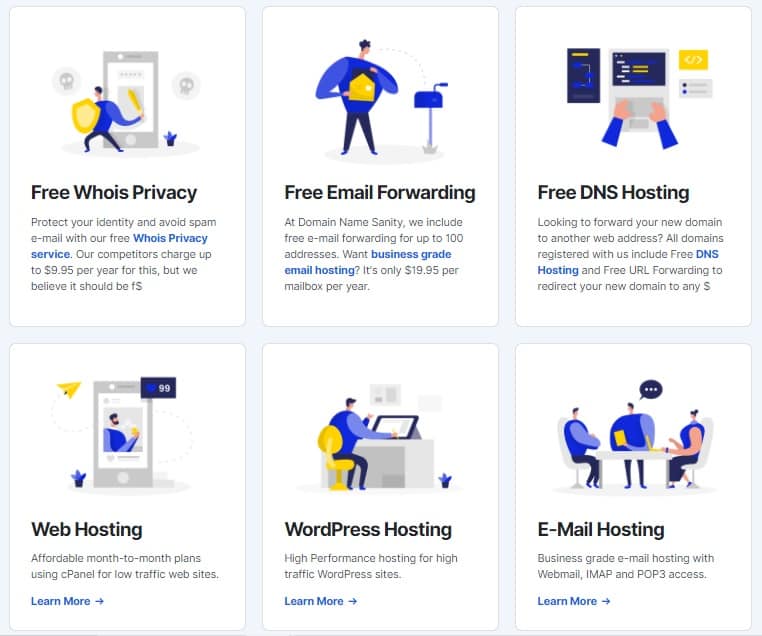
Our website strives to have a consistent and recognizable style. These graphics, for instance, are used to accompany this intro to the services we offer. Each graphic corresponds to the service, making it easier for visitors to get what’s going on at a first glance. Plus, the colors and the style are in-line with the overall aesthetic of the website.
In other words, custom graphics help establish your brand and make its aesthetic recognizable amongst your target audience.
Custom Images Improve SEO
When you properly optimize your images for the web, they can really help improve your website’s SEO. Image descriptions and tags serve as keywords that Google crawlers recognize when going through your website. For instance, if you save an image as calebs-coffee-grounds, someone googling coffee ground images may come across your image, and end up on your website.
People Respond to Visual Content
Did you know that people are twice as likely to share videos with their friends than other types of content? While our focus here is custom images and graphics, the lesson is more or less the same – people respond to visual content.
Plus, as we’ve already mentioned, when people are scrolling through their social media feeds, they go through content quite quickly. They may not pay much attention to the text, but good images are a lot likelier to keep their attention.
Custom Graphics and Images Establish You as a Professional
Professionally designed custom graphics show your audiences two things:
- That you care enough to put some effort into creating custom content.
- That you’re a professional.
Let’s get something straight: being a startup, a brand-new business, and thus probably dealing with scarce funds doesn’t mean skimping on image quality. There are plenty of ways to create high-quality, custom graphics without spending much (or any) money at all.
The ROI, however, will be noticeable if customers perceive you as a professional and an expert in your field. And one of the main ways to establish authority and trust in your clients is to have a look for your business’ online presence which is clean and representative.
In other words, being a beginner won’t make people forgive the poor quality and lack of authenticity. Which leads us to…
People Appreciate Authenticity
You may use a relevant stock image in a blog post, but that’s about it. Imagine posting a sponsored ad on Facebook using a stock image. People will pick up on the fact that it’s not original. Ads are no place to play fast and loose with a parameter as important as image quality.
Rather, you should use custom images or graphics that make your product or service stand out from the competition. Potential customers will appreciate the authentic and original thought behind your brand.
Communicate Better with Your Audience
One popular type of custom graphic is an infographic. Infographics are quite popular with audiences because they allow people to understand a text more quickly and easily. In fact, research has shown that people follow directions 323% better if the text is accompanied by illustrations.
Therefore, custom illustrations – like screenshots for how-to guides or infographics for research studies – can help improve your communication with the audience. It’s just a great helping tool to get your message across.
Tips on Creating Custom Visuals
Before we go over some resourceful tools for creating custom graphics and images, let’s go over guidelines that will help define your approach to the matter.
Consider the Purpose of the Visual
Each graphic or image will have its own purpose. In this sense, there’s a difference between an image prepared for a banner ad, a graphic prepared for your homepage, or a photograph intended for a blog post.
So, before setting to work on your visual content, think of what its purpose is and what you want to convey through it.
Bring Your Brand to the Forefront
Whenever applicable, bring your brand and logo to the visuals. Think back to the coffee bean example for this one.
Carry Your Brand’s Aesthetic
Even when you’re not explicitly putting your business branding in images, you should carry the established, recognizable aesthetic of your business into any custom imagery you create. Refer back to the Domain Name Sanity example. The graphics follow a similar visual style with softly curving lines, the predominant color is blue, the font is clean and consistent.
Clean Designs Go a Long Way
You don’t want your custom visuals to be too ad-y or banner-y. You want them looking modern, sleek, and cool. That’s why it’s important to try to keep it clean. Overcrowded images and graphics don’t fare well with today’s audiences. Less is more. You get it.
Keep Your Target Audience in Mind
Everything you do, you do for them. The same goes for custom visuals. Think over what your target audience likes before settling on a style that would be appealing to them. Age, taste, interests, hobbies, and aesthetics are only some of the parameters you should keep in mind when determining what would make them swoon and what would make them scroll right past your Instagram post.
It’s not just the style you need to worry about – it’s the content, too. Say your blog is meant to help seniors with little technical know-how figure out how to host a WordPress website. If you’re writing an article explaining how to add an image to a post, for instance, you’d need a whole lot more screenshots than if you were explaining to a tech-savvy millennial how to do something more complex, like how to increase the maximum upload file size on WordPress.
Inspire
If anything’s worth doing, it’s worth doing well. In addition to being appealing, your custom images should also inspire clients in one way or another. Maybe to buy from you, or maybe to start their own food blog. In any case, we want to make things that create a difference, however small.
Top Affordable Tools to Create Custom Images and Graphics
Let’s take a look at some affordable – and oftentimes free – tools you can use to create custom images and graphics. You’ll see that each type of software has its focuses and fortes, so you’ll probably end up using a few of these for different types of visuals.
1. Best Start-to-Finish Software for Beginners: Canva
Worried that you don’t have any experience with graphic design? With Canva, you don’t need it – but you still do need to explore what good design means.
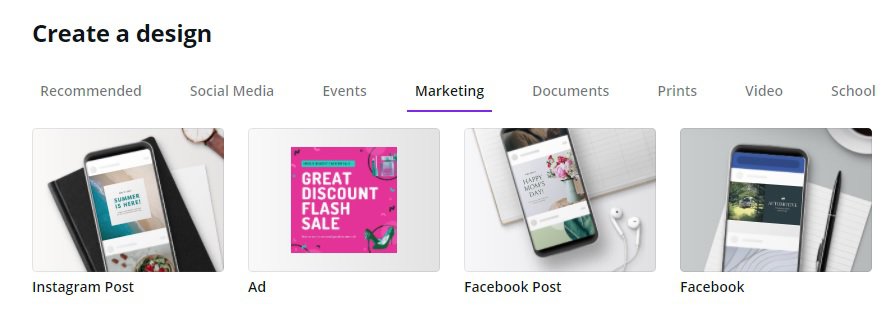
Canva is an easy-to-use, drag-and-drop graphic design software. It’s perfect for beginners as it comes with ready templates for ads, video, prints, events, social media, and more. They even offer custom image sizes that are compatible with the different types of social media channels.
You can use the free Canva version or opt for one of their premium plans if you want more tools and features at your disposal.
2. Best for Screenshot and Annotation: Snagit
If you need a lot of screenshots for how-to guides on your blog, for ads on social media, or to show how your product works on your website, you’ll probably need an efficient tool to capture screenshots and add annotations.
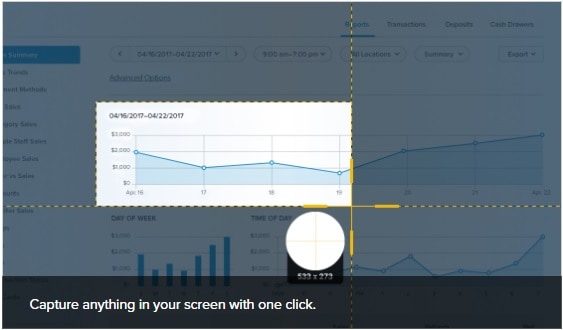
Snagit is a great tool for the job – it allows you to quickly take a screenshot, add annotations, and create visuals on top of the image. The downside is that while Snagit does offer a free trial, the product costs around $50.
Free alternatives to Snagit are Skitch (although it only works on Apple products) and Clipular, a neat little Chrome extension. Clipular also offers a paid version, if you need more features.
3. Best Image Manipulation Software: Gimp
I’ve loved Gimp since highschool. We learned image manipulation using Gimp. That’s also when I learned that price doesn’t always dictate quality. Gimp is as close to Photoshop as you can get without paying money, as the software is free and open-source.

Gimp is a resourceful image editor that will allow you to create graphics, retouch photographs, export to multiple file formats, play with color and vector graphics… It’s also not too intimidating for the beginner, though it may take watching a couple of tutorials to get started.
That all being said, professionals still prefer using Photoshop. It does cost over $50, though, per month. A one-time purchase isn’t available.
You can also experiment with PowerPoint to create custom graphics, and this is an especially good idea if you already have it on your computer. Yes, PowerPoint is intended for creating presentations, but it’s also so easy to make simple graphics in PowerPoint and then export them as image files.
4. Best for Infographics: Easelly
We already talked about the importance of infographics. Users are a lot likelier to share them, and they’re also a lot likelier to get what’s going on quickly and easily. Our favorite infographic-maker is Easelly.
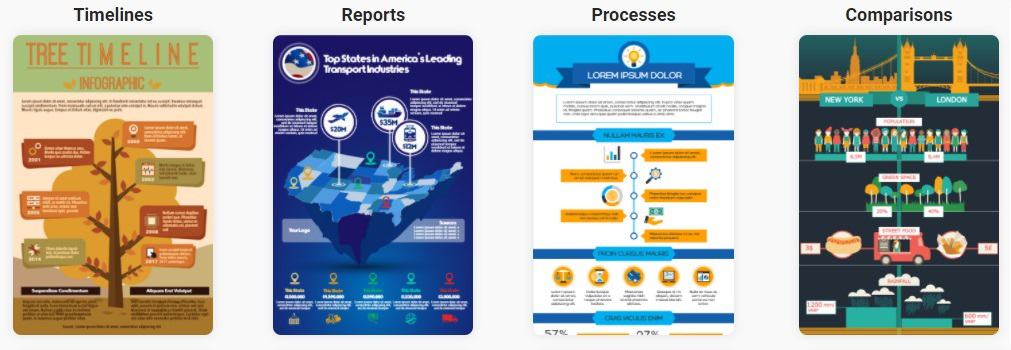
Easelly is a simple and intuitive drag-and-drop infographic maker that offers tons of customizable templates that will allow you to put information into fun visuals. Of course, you can also use it to make infographics from scratch.
Easelly comes with a lot of useful features that will enable you to optimize your custom infographics. For instance, it allows you to embed photos, charts, custom graphics, and much more. It also comes with lots of premade objects, graphics, shapes, and icons that you can use to add some panache to your infographics.
You can try Easelly for free, though to continue using it you’ll need to sign up for a paid plan. The pricing is quite affordable and costs $5/month for businesses. There are discounts for personal use, nonprofits, teachers, and students.
A Few Words Before You Go…
So there you have it – the why’s and the how’s of creating custom visuals for your business. As you can see, it doesn’t require a huge budget or a lot of know-how to get you started on creating some authentic, custom graphics to woo your audience.
Of course, if you do have the budget for it, you may also wish to hire a graphic designer to do some of the work for you. After all, they’re the pros.
View Related Articles
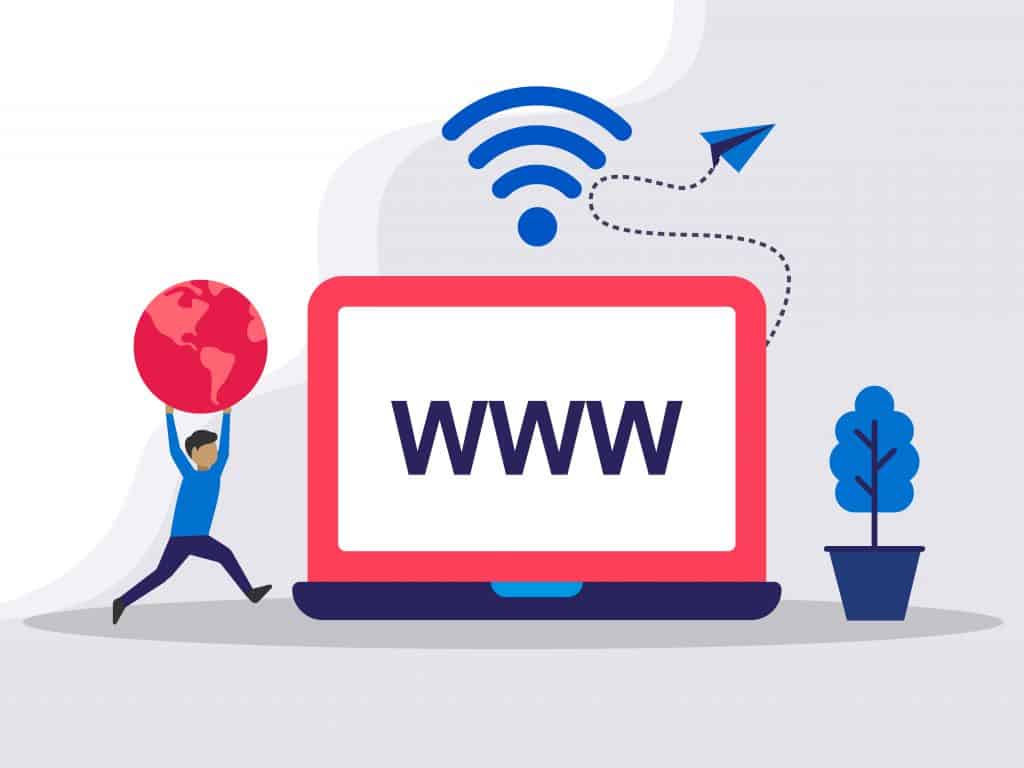
How Do I Permanently Buy a Domain Name?
You can’t. Was that too upfront? It’s the truth, though – domain names are just not designed to work that way. While big and small businesses have been trying to permanently own their domain names for decades, ICANN, the Internet Corporation for Assigned Names and Numbers, has made it impossible for anyone to own a domain name for life.

How Long Does It Take for DNS to Update?
DNS propagation, or DNS updating, refers to the period of time between making a change to your domain name and seeing that change reflected in DNS across the internet. Propagation occurs after a few different types of actions, including making a change to your DNS records, or changing your domain name’s WHOIS information.
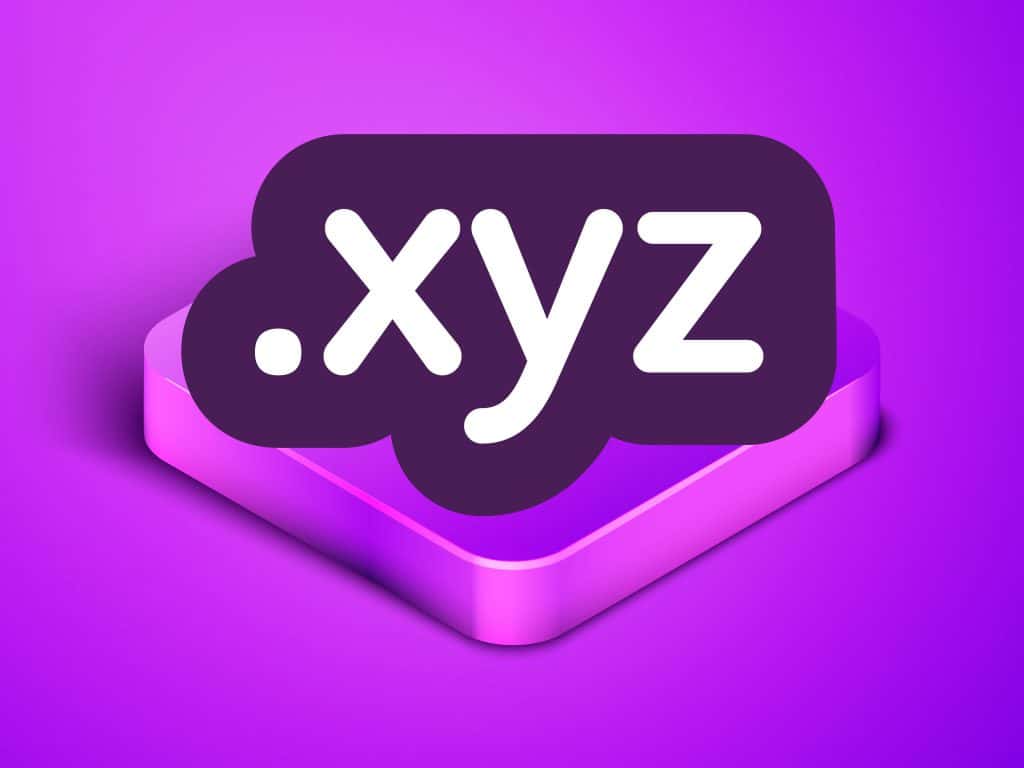
All About the .xyz Domain Extension
The .xyz domain extension is especially a great choice for businesses that would like a shorter domain than they might be able to get in .com, and brands that are looking to re-invent their image with a focus on a younger audience (as XYZ stands for Generation X, Y and Z).